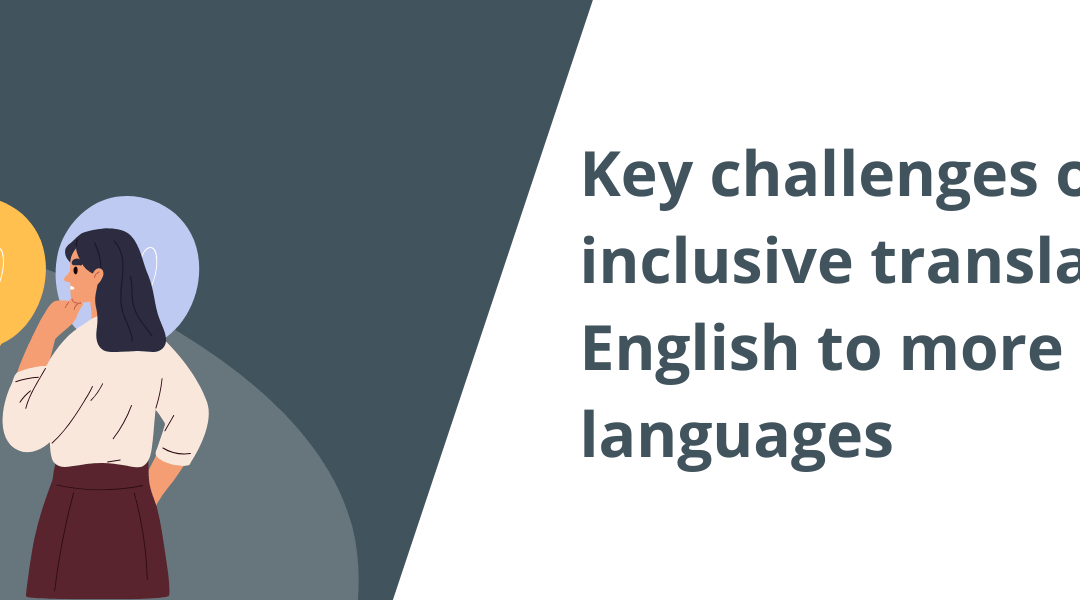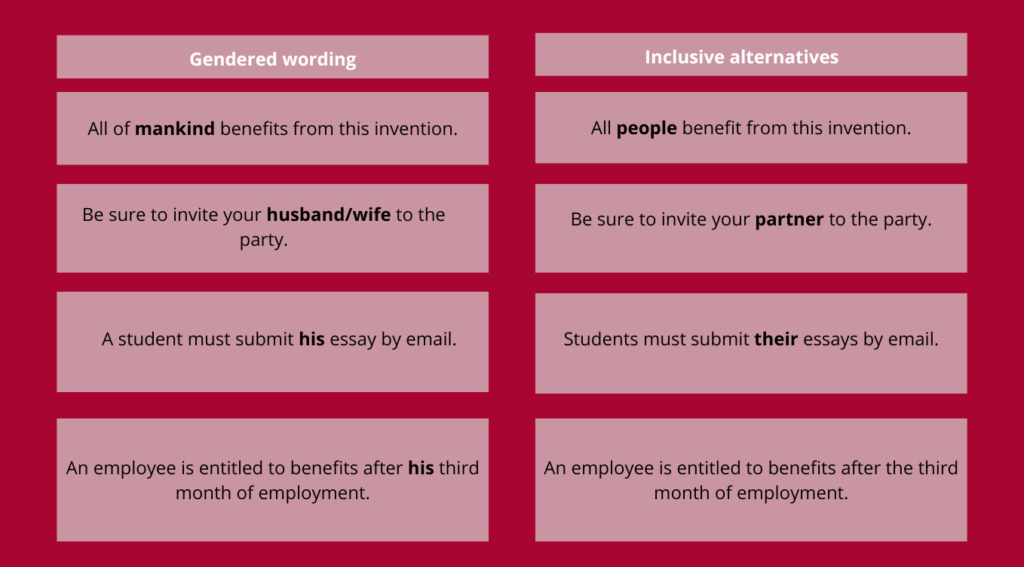Gender-inclusive writing is constantly evolving, and even its biggest supporters come up against challenges when attempting to put this way of writing or translating into practice.
English is not a grammatically gendered language, meaning that most nouns and adjectives, for example, are neither masculine nor feminine and can apply to any gender. This fact makes gender-inclusive writing easier than it is in more gendered languages such as French, Spanish or Italian. Nonetheless, English still has its challenges and its own set of writing strategies for dealing with them.
Gendered nouns and pronouns
Many words in English, such as handyman, chairman or mankind, still use the “male default” even if they’re intended to include all genders. Some job titles also differ based on gender: actor and actress, waiter and waitress…. Fortunately, there are simple and inclusive alternatives, including the following:
- Choose nouns that don’t include the male default (e.g., actor or waiter, as mentioned above).
- Choose neutral titles or roles.
- Use “they” “them” and “their” instead of gendered pronouns.<
Legal writing
Laws, contracts and many other legal texts still use exclusively masculine pronouns (“he,” “him,” “his”). The increasingly contested assumption is that the masculine refers to all genders. There are simple ways of rewording your copy to avoid this problem, including the following:
- Remove any gendered pronouns.
- Use more impersonal phrasing such as “it is.”
- Use the singular “they.”
While inclusive writing may initially take more reflection, it quickly becomes second nature. You typically have multiple inclusive alternatives that require only minor changes. Every change can help make your content both more effective and more appealing to your diverse target audiences.
Need professional assistance to take inclusive translation and writing to the next level?
Versacom has specialists to translate or review any content you want to make more inclusive, whether it’s in English, from English into a more gendered language, or in any other language or language combination.
Our experts can also help you define, document and disseminate your organization’s overall direction and practical approach to inclusive writing and translation.


